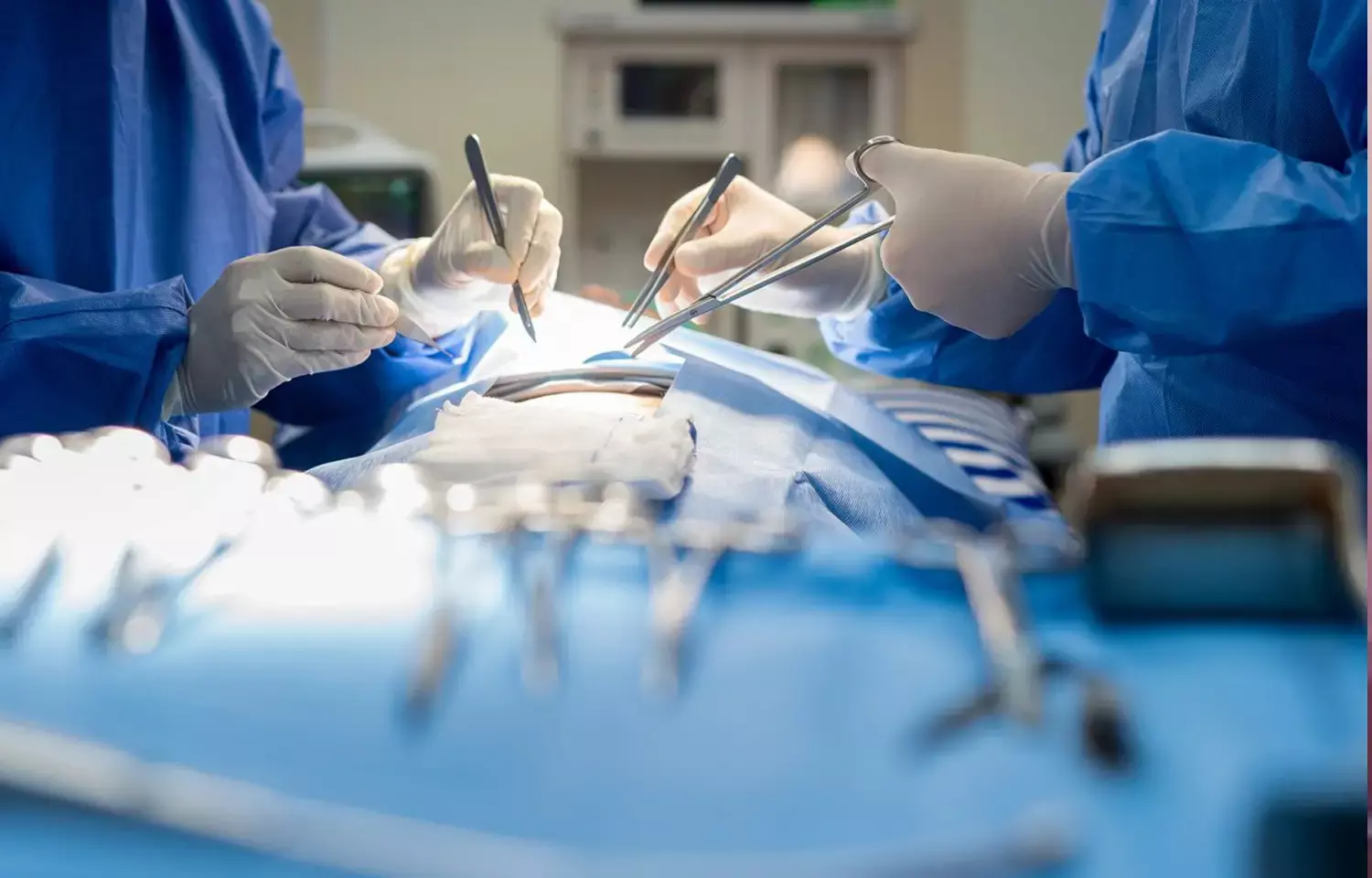- Home
- Medical news & Guidelines
- Anesthesiology
- Cardiology and CTVS
- Critical Care
- Dentistry
- Dermatology
- Diabetes and Endocrinology
- ENT
- Gastroenterology
- Medicine
- Nephrology
- Neurology
- Obstretics-Gynaecology
- Oncology
- Ophthalmology
- Orthopaedics
- Pediatrics-Neonatology
- Psychiatry
- Pulmonology
- Radiology
- Surgery
- Urology
- Laboratory Medicine
- Diet
- Nursing
- Paramedical
- Physiotherapy
- Health news
- Fact Check
- Bone Health Fact Check
- Brain Health Fact Check
- Cancer Related Fact Check
- Child Care Fact Check
- Dental and oral health fact check
- Diabetes and metabolic health fact check
- Diet and Nutrition Fact Check
- Eye and ENT Care Fact Check
- Fitness fact check
- Gut health fact check
- Heart health fact check
- Kidney health fact check
- Medical education fact check
- Men's health fact check
- Respiratory fact check
- Skin and hair care fact check
- Vaccine and Immunization fact check
- Women's health fact check
- AYUSH
- State News
- Andaman and Nicobar Islands
- Andhra Pradesh
- Arunachal Pradesh
- Assam
- Bihar
- Chandigarh
- Chattisgarh
- Dadra and Nagar Haveli
- Daman and Diu
- Delhi
- Goa
- Gujarat
- Haryana
- Himachal Pradesh
- Jammu & Kashmir
- Jharkhand
- Karnataka
- Kerala
- Ladakh
- Lakshadweep
- Madhya Pradesh
- Maharashtra
- Manipur
- Meghalaya
- Mizoram
- Nagaland
- Odisha
- Puducherry
- Punjab
- Rajasthan
- Sikkim
- Tamil Nadu
- Telangana
- Tripura
- Uttar Pradesh
- Uttrakhand
- West Bengal
- Medical Education
- Industry
Does Toupet fundoplication provide better outcome after para-esophageal hernia repair?

Sweden: A new study published in the British Journal of Surgery showed that following para-oesophageal hernia (POH) repair, a partial posterior wrap (Toupet fundoplication) demonstrated fewer obstructive problems and enhanced quality of life compared to a total (Nissen) fundoplication.
Para-oesophageal hernia repair requires a fundoplication, although it's debatable whether that kind of fundoplication reduces postoperative mechanical difficulties. In order to examine the effectiveness of whole vs. partial posterior fundoplication in the surgical correction of para-esophageal hernias, Apostolos Analatos and colleagues undertook this study.
Between May 2009 and October 2018, a randomized, double-blind clinical experiment was undertaken. After hernia reduction and crural repair, a total of 70 patients with symptomatic POH were assigned to either a whole (Nissen) or a posterior partial (Toupet) fundoplication. At six months after surgery, dysphagia (measured by Ogilvie dysphagia scores) was the main result. The Dakkak dysphagia score, quality of life (QoL), peri- and postoperative problems, gastroesophageal reflux, peri- and postoperative complications, and radiologically verified hernia recurrence were secondary outcomes.
The key findings of this study were as follows:
1. Ogilvie dysphagia ratings were constant in the Nissen group at the 3- and 6-month follow-ups compared to baseline, but considerably better in the Toupet group.
2. At six months, the Nissen group had substantially higher Dakkak dysphagia scores than the Toupet group.
3. The absolute median improvement from preoperative values in the mental component scores of the Short Form-36 Quality - of - life questionnaire was, however, considerably larger in the Toupet group at 3 and 6 months postoperatively.
4. At 6 months, POH recurrence was radiologically verified in 15 of 32 patients (47%) in the Toupet group and 11 of 24 patients (47%) in the Nissen group.
In conclusion, from the findings of this study, it is advisable to employ partial posterior wrap (Toupet fundoplication) after para-oesophageal hernia repair for better and efficient prognosis.
Reference:
Analatos, A., Lindblad, M., Ansorge, C., Lundell, L., Thorell, A., & Håkanson, B. S. (2022). Total versus partial posterior fundoplication in the surgical repair of para-oesophageal hernias: randomized clinical trial. In BJS Open (Vol. 6, Issue 3). https://doi.org/10.1093/bjsopen/zrac034
Neuroscience Masters graduate
Jacinthlyn Sylvia, a Neuroscience Master's graduate from Chennai has worked extensively in deciphering the neurobiology of cognition and motor control in aging. She also has spread-out exposure to Neurosurgery from her Bachelor’s. She is currently involved in active Neuro-Oncology research. She is an upcoming neuroscientist with a fiery passion for writing. Her news cover at Medical Dialogues feature recent discoveries and updates from the healthcare and biomedical research fields. She can be reached at editorial@medicaldialogues.in
Dr Kamal Kant Kohli-MBBS, DTCD- a chest specialist with more than 30 years of practice and a flair for writing clinical articles, Dr Kamal Kant Kohli joined Medical Dialogues as a Chief Editor of Medical News. Besides writing articles, as an editor, he proofreads and verifies all the medical content published on Medical Dialogues including those coming from journals, studies,medical conferences,guidelines etc. Email: drkohli@medicaldialogues.in. Contact no. 011-43720751


